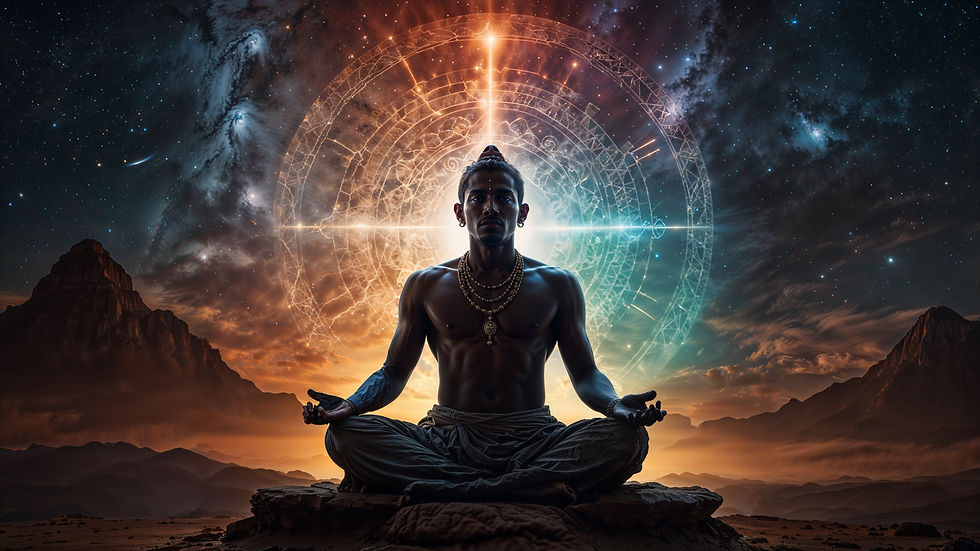
The Roots of Astral Travel: Understanding the Foundations
Unearth the history, master the practice, and unlock the doorway to new dimensions.
For as long as humans have wondered about their place in the universe, they’ve sought ways to transcend the physical and touch the infinite.
Astral projection is not just a modern fascination; it is an ancient practice rooted in the wisdom of cultures that dared to explore the unknown.
From the sacred rituals of ancient Egypt to the disciplined meditations of Tibetan monks, this journey beyond the body has been a gateway to understanding life’s deepest mysteries.
More than a spiritual tool, astral projection is a testament to the courage to look inward and outward at the same time, uncovering truths about the self, existence, and the vast interconnectedness of all things.


Ancient Civilizations and Astral Travel
The ability to transcend the physical has been a recurring theme in the spiritual practices of countless civilizations.
Ancient Egypt: The Ba, Soul in Flight
The Egyptians viewed the Ba as a part of the soul capable of leaving the body to traverse spiritual realms. This wasn’t limited to the afterlife; during their lives, practitioners used meditation and rituals within sacred spaces to consciously guide the Ba on journeys of divine insight. Temples and burial chambers became portals, bridging the physical and spiritual worlds through profound practices.
Tibetan Buddhism: Consciousness as a Pathway
In Tibetan Buddhism, phowa, the transference of consciousness, is a cornerstone of spiritual evolution. Through intentional breathwork and visualization of sacred symbols, monks consciously released their awareness into astral realms. These practices were not just a preparation for death but a way to grasp the interconnected nature of existence.
Hindu and Yogic Traditions: Unlocking the Siddhis
The yogic traditions speak of siddhis, spiritual abilities gained through intense meditation. One such siddhi is conscious astral travel, achieved by activating the Ajna chakra (third eye). Techniques like pranayama and mantra chanting served as tools for reaching these elevated states, allowing yogis to navigate the astral plane as part of their spiritual journey.
Astral Projection Through the Ages
Astral projection’s enduring relevance is woven through the spiritual fabric of human history.
Ancient Greece: The Soul’s Journey
Plato and other philosophers described the soul’s ability to leave the body, exploring realms beyond the physical. These ideas became philosophical foundations for understanding the nature of reality and human consciousness.
Medieval Mysticism: Divine Encounters
Medieval mystics and alchemists often spoke of spiritual visions that lifted their consciousness beyond earthly confines. These journeys were described as moments of divine insight, offering profound revelations about the nature of God, existence, and the human spirit.
The Modern Revival: Western Esotericism
The late 19th and early 20th centuries saw figures like Madame Blavatsky bring astral projection into Western consciousness. The Theosophical Society blended ancient wisdom with emerging spiritual philosophies, teaching methods for conscious astral exploration and its potential for enlightenment.

What Is Astral Projection?
Astral projection is the conscious act of separating your awareness from your physical body, allowing you to journey into the astral plane, a realm of boundless energy, thought, and light.
Unlike dreams or unconscious visions, astral projection is an intentional and controlled practice, with travelers often describing the sensation as floating or flying.
The Astral Body: Your consciousness takes on a subtle, energetic form, capable of exploring realms beyond the physical.

The Astral Plane: A dimension where thought shapes reality, and the boundaries of time and space dissolve.

The Silver Cord: A luminous tether connecting your astral and physical bodies, ensuring a safe return.

Vibrational State: Often described as buzzing or tingling, this sensation signals readiness for astral travel.


Learning to Project: The Early Stages
Astral projection is a skill that requires patience, practice, and preparation. While some may naturally experience it, most people develop the ability through dedication and intention.
Steps to Begin Your Journey
-
Relaxation: Achieve deep mental and physical stillness through progressive relaxation techniques.
-
Visualization: Picture yourself gently rising above your physical body, floating effortlessly into the astral realm.
-
Focus on Vibrations: When you feel subtle buzzing or tingling, stay calm—it’s a natural precursor to projection.
-
Set Clear Intentions: Before projecting, decide on your purpose or destination to guide your astral journey.
Why Explore the Astral Plane?
Astral projection isn’t just a skill—it’s a transformative experience.
-
Expand Awareness: Gain perspectives that stretch beyond the limits of the physical world.
-
Seek Insight: Explore answers to life’s biggest questions—your purpose, the nature of existence, and what lies beyond.
-
Connect Deeply: Encounter energies, guides, and realms that offer profound clarity and wisdom.
Each journey into the astral plane is a step toward understanding your true self and the universe around you.
Your Next Step: Begin Your Journey
With a foundation of history, principles, and understanding, you’re ready to take the first steps into the astral realm. Whether you’re just starting or looking to refine your skills, the next chapter offers a practical guide to beginning your practice.
